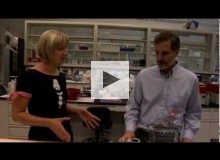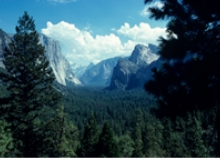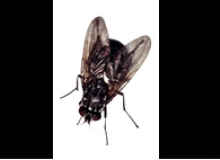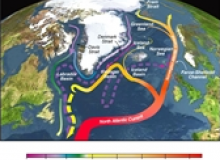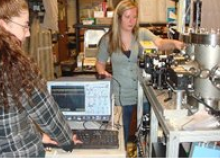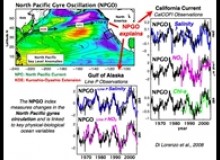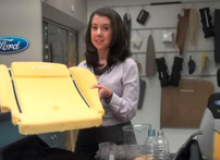Search
National Science Foundation
Monday, May 16, 2011
Can bugs save the planet? Join host Lisa Van Pay, PhD (aka a scientist) as she explores exciting alternative energy research taking place around the country.
Tags: National Science Foundation, green revolution, Creative Energy Frenzy!
National Science Foundation
Monday, September 05, 2011
Many species of mammals in Yosemite National Park have shifted their home ranges to higher elevations over the last hundred years.
Tags: National Science Foundation, california, wildlife, warming, nsf, Science Corner, yosemite, national park, museum, Berkeley
National Science Foundation
Monday, August 22, 2011
By modeling designs after concepts found in nature, engineers hope to create stronger buildings and more efficient innovations. Something as simple as flapping wings provides researchers with new insight into energy sources and its use.
Tags: National Science Foundation, University, nature, Toronto, George Mason, design, genes, Science Corner, missouri, texas a&m
National Science Foundation
Monday, June 20, 2011
In urban areas that receive a lot of rain, researchers from Drexel University have transformed small green spaces, such as medians and traffic circles, into "greenstreets" that can help manage a city's excess storm water. The areas also help...
Tags: Technology, National Science Foundation, innovation, science, nsf, Drexel, greenstreets, NYC parks, environmental engineering, design
National Science Foundation
Monday, August 29, 2011
Over time, warming events in Greenland and the North Atlantic were followed by gradual cooling. These changes correlate well with the concentration of nitrous oxide found in ice core samples.
Tags: National Science Foundation, warming, greenhouse gases, cooling, CO2, Science Corner, greenland, atlantic, nitrous oxide, ice
National Science Foundation
Monday, August 15, 2011
Researchers have developed a new way to monitor organic aerosols (OA)--a sizable class of atmospheric aerosols, which exert a strong impact on climate as well as human health. Aerosols are tiny particles suspended in the air.
Tags: National Science Foundation, nsf, vermont, Science Corner, UVM, aerosols, infrared, laser, spectrometry
National Science Foundation
Monday, July 25, 2011
Decadal fluctuations in ocean salinity, nutrients, chlorophyll, a variety of zooplankton species, and fish stocks in the Northeast Pacific have been unexplained for many years.
Tags: National Science Foundation, california, University, warming, marine, nutrients, northwest, pacific, Science Corner, gyre
National Science Foundation
Monday, September 12, 2011
Mixed prairie grasses, grown on degraded land, may be a better source of biofuel than corn ethanol or soybean biodiesel.
Tags: National Science Foundation, biofuel, university of minnesota, Science Corner, david tilman, prairie grass
National Science Foundation
Monday, September 19, 2011
Electric vehicles are here to stay. With that being said, how will EVs engage more drivers while increasing efficiency? This study revealed that smaller battery packs in EVs are much more cost-effective and environmentally-friendly than larger, more...
Tags: Technology, National Science Foundation, Science Corner, It's Electric! The Best of Batteries
National Science Foundation
Monday, May 09, 2011
Last night on Bloomberg West we showed you City Car, a car that’s in a league of its own! These shareable electric cars can stack together like shopping carts, so they take up less space and also make getting around cities easier and more...

